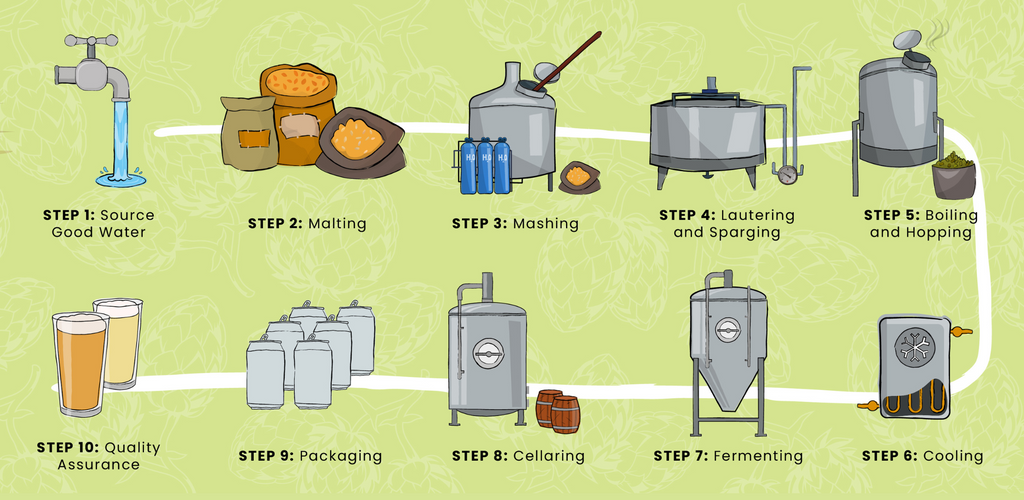How to Make Beer 101

How is beer made? Here's a quick look at the 10 most vital steps every brewer goes through to turn raw ingredients into a delicious beverage worth savoring.
Step 1: Source Good Water
Water is an important ingredient when making beer, as it helps determine the base flavor of the final liquid. The water's pH level can make beer more or less bitter, and using contaminated or highly chlorinated water can impart unfortunate off-notes.
Step 2: Malting
Malting occurs when a brewer steeps their grain of choice (barley or wheat, for example) in water, resting the mixture in a carefully controlled environment until it sprouts, then transferring it to be dried out in a roaster or kiln.
Step 3: Mashing
Now the milled malt is combined with water and heated to between 100 and 170 degrees Fahrenheit to help the natural enzymes in the malt break down into sugar that will eventually feed yeast during fermentation. Mashing generally only takes a couple of hours, though the exact timing is somewhat of an art form.
Step 4: Lautering and Sparging
Lautering and sparging go hand in the hand. The first part of the process separates the sweet wort from the now spent grain, while the second scatters hot water over the grain bed to rinse off the sugars.
Step 5: Boiling and Hopping
The brewing process now focuses on the wort, which is boiled to kill any microorganisms while also "activating" the hops that are added during this stage so that they release their innate flavor and give the wort much-needed character.
Step 6: Cooling
After the wort is boiled, it's time to add yeast — but yeast dies in hot water, so the wort is rapidly cooled in ultra-clean container or tank to prevent contaminants from flourishing during the quick temperature shift.
Step 7: Fermenting
Fermentation is a roughly two-week process during which the yeast gobbles up the sugars generated earlier in the beer-making process, converting those sugars into crucial components: alcohol and carbon dioxide. The CO2 simply evaporates, but the alcohol remains, creating what we know as beer.
Step 8: Cellaring
Some brewers choose to cellar beer, essentially storing it under ideal conditions, allowing it to mature in the same way wine does. The amount of aging a beer requires depends on the style (ales generally need very little, while lagers need more).
Step 9: Packaging
Beer can be packaged in cans or bottles for retail sale, or put into larger containers like kegs for commercial use. Larger breweries use automated processes to gently move beer into their final containers, careful not to disturb the beer's natural carbonation. Smaller breweries might do part or all of the process by hand.
Step 10: Quality Assurances
Quality assurance (QA) is often associated with the final step of beer making, when the packaged product is checked to make sure it meets pre-set standards, but QA really occurs at every step to monitor ingredients, machinery, and processes throughout.
See, Taste, and Experience Beer From Top Craft Breweries
Sometimes the best way to understand the beer-making process is to visit a brewery and taste beers where they're made.
Here are a few of our favorites:




